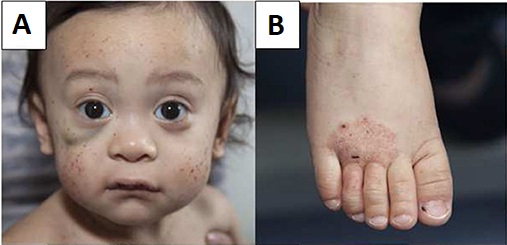Wiskott Aldrich Syndrome

Wiskott Aldrich syndrome (WAS) is a disease with immunological deficiency and reduced ability to form blood clots. Signs and symptoms include easy bruising or bleeding due to a decrease in the number and size of platelets; susceptibility to infections and to immune and inflammatory disorders; and an increased risk for some cancers (such as lymphoma). Also, a skin condition known as eczema is common in people with WAS. Wiskott Aldrich syndrome is caused by mutations in the WAS gene and is inherited in an X-linked manner. It primarily affects males. Treatment may depend on severity and symptoms in each person, but hematopoietic cell transplantation is the only known cure. Hematopoietic cells are the blood-forming stem cells that can be found mainly in the sponge-like material found inside bones (bone marrow), but also in the bloodstream (peripheral blood stem cells (PBSCs), and in the umbilical cord. Prognosis have improved over time due to better management of the disease. People who have a successful and uncomplicated hematopoeitic cell transplantation, usually have normal immune function and, normal survival.
Wiskott-Aldrich syndrome, X-linked thrombocytopenia (XLT), and X-linked neutropenia (XLN) are known as “WAS-related disorders” because these diseases are all caused by mutations in the WAS gene, and have overlapping symptoms ranging from severe to mild (Wiskott-Aldrich syndrome is the most severe). The WAS gene mutations result in deficiency of the Wiskott-Aldrich syndrome protein (WASP). The more deficient the WASP, the more severe the disease.
Wiskott-Aldrich syndrome, X-linked thrombocytopenia (XLT), and X-linked neutropenia (XLN) are known as “WAS-related disorders” because these diseases are all caused by mutations in the WAS gene, and have overlapping symptoms ranging from severe to mild (Wiskott-Aldrich syndrome is the most severe). The WAS gene mutations result in deficiency of the Wiskott-Aldrich syndrome protein (WASP). The more deficient the WASP, the more severe the disease.